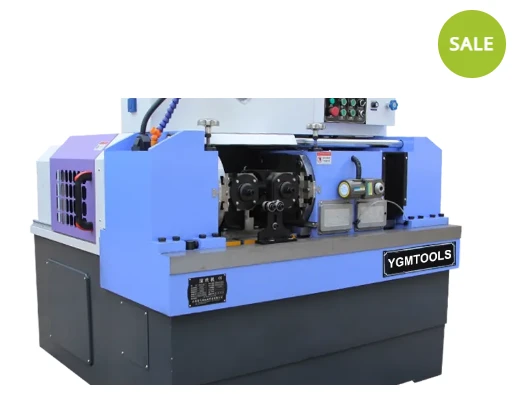
-
 Afrikaans
Afrikaans -
 Albanian
Albanian -
 Amharic
Amharic -
 Arabic
Arabic -
 Armenian
Armenian -
 Azerbaijani
Azerbaijani -
 Basque
Basque -
 Belarusian
Belarusian -
 Bengali
Bengali -
 Bosnian
Bosnian -
 Bulgarian
Bulgarian -
 Catalan
Catalan -
 Cebuano
Cebuano -
 Corsican
Corsican -
 Croatian
Croatian -
 Czech
Czech -
 Danish
Danish -
 Dutch
Dutch -
 English
English -
 Esperanto
Esperanto -
 Estonian
Estonian -
 Finnish
Finnish -
 French
French -
 Frisian
Frisian -
 Galician
Galician -
 Georgian
Georgian -
 German
German -
 Greek
Greek -
 Gujarati
Gujarati -
 Haitian Creole
Haitian Creole -
 hausa
hausa -
 hawaiian
hawaiian -
 Hebrew
Hebrew -
 Hindi
Hindi -
 Miao
Miao -
 Hungarian
Hungarian -
 Icelandic
Icelandic -
 igbo
igbo -
 Indonesian
Indonesian -
 irish
irish -
 Italian
Italian -
 Japanese
Japanese -
 Javanese
Javanese -
 Kannada
Kannada -
 kazakh
kazakh -
 Khmer
Khmer -
 Rwandese
Rwandese -
 Korean
Korean -
 Kurdish
Kurdish -
 Kyrgyz
Kyrgyz -
 Lao
Lao -
 Latin
Latin -
 Latvian
Latvian -
 Lithuanian
Lithuanian -
 Luxembourgish
Luxembourgish -
 Macedonian
Macedonian -
 Malgashi
Malgashi -
 Malay
Malay -
 Malayalam
Malayalam -
 Maltese
Maltese -
 Maori
Maori -
 Marathi
Marathi -
 Mongolian
Mongolian -
 Myanmar
Myanmar -
 Nepali
Nepali -
 Norwegian
Norwegian -
 Norwegian
Norwegian -
 Occitan
Occitan -
 Pashto
Pashto -
 Persian
Persian -
 Polish
Polish -
 Portuguese
Portuguese -
 Punjabi
Punjabi -
 Romanian
Romanian -
 Russian
Russian -
 Samoan
Samoan -
 Scottish Gaelic
Scottish Gaelic -
 Serbian
Serbian -
 Sesotho
Sesotho -
 Shona
Shona -
 Sindhi
Sindhi -
 Sinhala
Sinhala -
 Slovak
Slovak -
 Slovenian
Slovenian -
 Somali
Somali -
 Spanish
Spanish -
 Sundanese
Sundanese -
 Swahili
Swahili -
 Swedish
Swedish -
 Tagalog
Tagalog -
 Tajik
Tajik -
 Tamil
Tamil -
 Tatar
Tatar -
 Telugu
Telugu -
 Thai
Thai -
 Turkish
Turkish -
 Turkmen
Turkmen -
 Ukrainian
Ukrainian -
 Urdu
Urdu -
 Uighur
Uighur -
 Uzbek
Uzbek -
 Vietnamese
Vietnamese -
 Welsh
Welsh -
 Bantu
Bantu -
 Yiddish
Yiddish -
 Yoruba
Yoruba -
 Zulu
Zulu
Feb . 14, 2025 17:02
Back to list
flat die thread rolling machine
Thread rolling machines play a pivotal role in the manufacturing industry, revolutionizing the way threads are produced on various materials. These machines are widely acclaimed for their efficiency and precision and are indispensable in creating high-quality threads on workpieces. Understanding the operation and benefits of thread rolling machines is crucial for businesses looking to optimize their production processes.
From a financial perspective, thread rolling machines offer significant cost savings. The efficiency and speed of the thread rolling process result in reduced labor costs and lower power consumption compared to older, more traditional threading methods. Additionally, the longevity of rolled threads often leads to less frequent maintenance and replacement of components, saving businesses money in the long run. Furthermore, thread rolling machines are versatile, accommodating various materials ranging from metals like stainless steel and titanium to certain plastic compounds. This versatility allows businesses to expand their product offerings and cater to diverse market needs without investing in multiple types of equipment. To enhance the thread rolling process, it is crucial to work with seasoned professionals who understand the nuances of machine operation and maintenance. Regular training and updates on best practices can help optimize machine performance and extend its lifespan. Working closely with machine manufacturers for regular servicing also ensures that the machinery remains in optimal working condition, reducing unexpected downtime and maintaining consistent production quality. In conclusion, thread rolling machines are an invaluable asset for modern manufacturing operations. They embody precision, efficiency, and sustainability, aligning with the evolving demands of the industry. By investing in quality machinery and fostering a culture of continuous learning and improvement, businesses can achieve superior thread quality and a competitive edge in the marketplace.


From a financial perspective, thread rolling machines offer significant cost savings. The efficiency and speed of the thread rolling process result in reduced labor costs and lower power consumption compared to older, more traditional threading methods. Additionally, the longevity of rolled threads often leads to less frequent maintenance and replacement of components, saving businesses money in the long run. Furthermore, thread rolling machines are versatile, accommodating various materials ranging from metals like stainless steel and titanium to certain plastic compounds. This versatility allows businesses to expand their product offerings and cater to diverse market needs without investing in multiple types of equipment. To enhance the thread rolling process, it is crucial to work with seasoned professionals who understand the nuances of machine operation and maintenance. Regular training and updates on best practices can help optimize machine performance and extend its lifespan. Working closely with machine manufacturers for regular servicing also ensures that the machinery remains in optimal working condition, reducing unexpected downtime and maintaining consistent production quality. In conclusion, thread rolling machines are an invaluable asset for modern manufacturing operations. They embody precision, efficiency, and sustainability, aligning with the evolving demands of the industry. By investing in quality machinery and fostering a culture of continuous learning and improvement, businesses can achieve superior thread quality and a competitive edge in the marketplace.
Share:
Latest news
Upgrade Your Production Line With Advanced Threading Solutions
NewsJun.12,2025
Optimize Precision With Advanced Thread Rolling Equipment
NewsJun.12,2025
Maximize Production With A High-Speed Thread Rolling Machine
NewsJun.12,2025
Master Precision Engineering With The Right Roller Threading Machine
NewsJun.12,2025
Find The Right Thread Rolling Tool For Precision Threading
NewsJun.12,2025
Boost Efficiency With Our Thread Rolling Machine
NewsJun.12,2025
